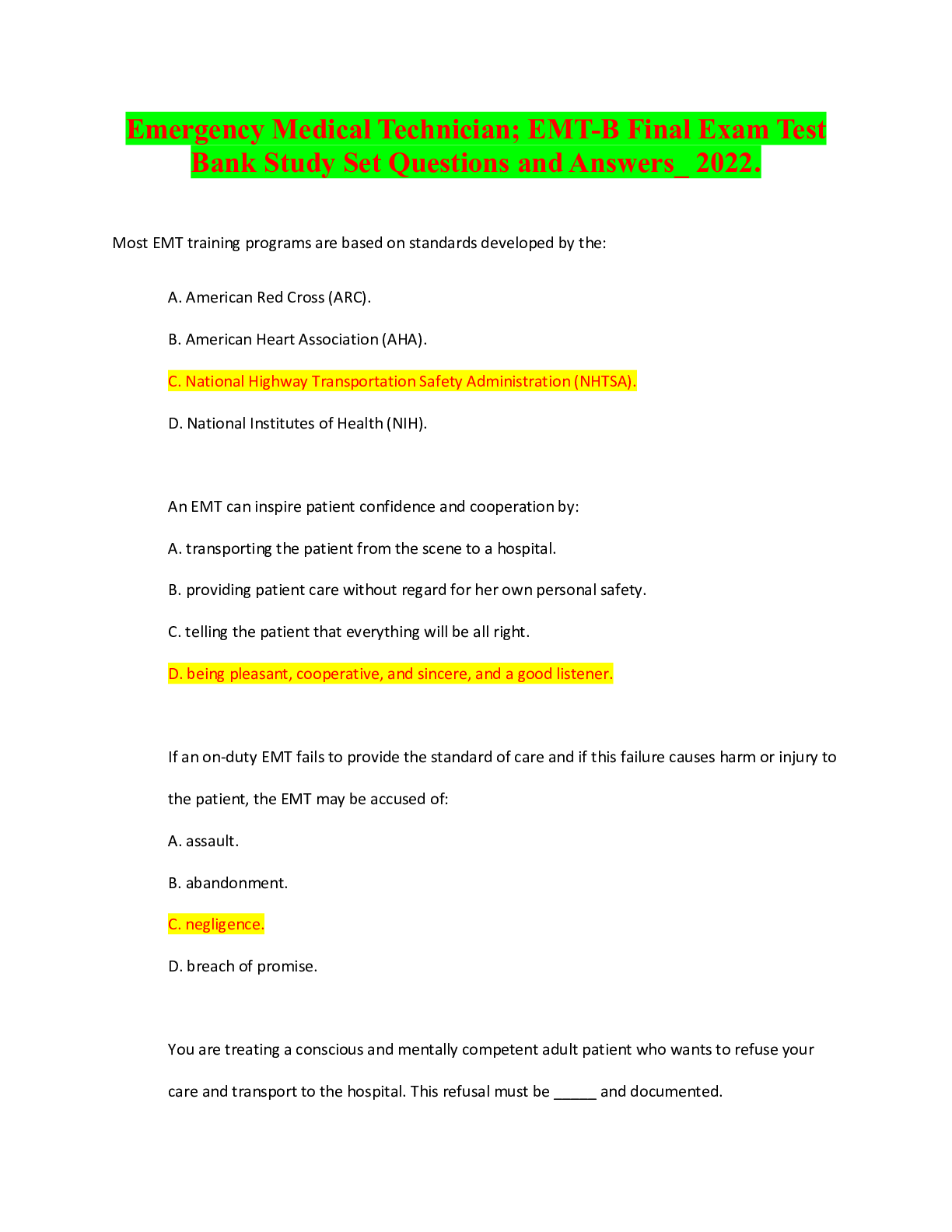*NURSING > QUESTIONS & ANSWERS > NURS 6640 Final Exam Test Bank 300 Questions with Answers (All)
NURS 6640 Final Exam Test Bank 300 Questions with Answers
Document Content and Description Below
NURS 6640 Final Exam Test Bank 300 Questions with Answers Question 1 1 out of 1 points A PMHNP has been treating a 9-year-old patient who was referred by her school. Students are asked to raise t... heir hands before speaking during group discussion, but the patient seems to blurt out what she wants to say without being called on. She also interrupts other children while they are talking instead of waiting her turn. When the patient gets frustrated, she has trouble controlling her emotions and cries often. Based on the initial information provided, the first focus by PMHNP is the child’s ____________. Answer: B. self-regulation Question 2 1 out of 1 points The PMHNP is caring for a patient who experiences depression caused by the traumatic experience of her dog passing away. She reports not being able to eat or sleep, and sometimes doesn’t want to leave the house at all. Which statement is most appropriate for the PMHNP to maximize the patient’s adaptive coping mechanisms? Answer: C. “It’s important to be mindful of how you feel and then to determine what causes those feelings.” Question 3 1 out of 1 points A PMHNP is using Gestalt therapy to communicate with a 50-year-old patient who is going through a divorce. As he is calmly sharing the details of his divorce, the PMHNP notices that Dave is tapping his fingers on his legs. What is an appropriate response by the PMHNP using the technique of focusing? Answer: A. “I noticed that your fingers were tapping. Can you give a voice to your fingers?” Question 4 1 out of 1 points The PMHNP is meeting with an older, female adult patient and her daughter. The patient has early onset dementia. The daughter expresses concern, saying, “I don’t want you to just stick my mother in a home and give her medicine. I’m worried that’s what people are going to want to do.” What is the best response by the PMHNP to the daughter? Answer: B. “The type of treatment depends on the stage of dementia and safety considerations.” Question 5 1 out of 1 points A PMHNP is treating a 10-year-old boy who is exhibiting signs of aggression and attention problems. What type of intervention will the PMHNP consider using a common elements approach? Answer: D. All of the above Question 6 1 out of 1 points A 35-year-old male patient is being treated for alcohol addiction. He asks for the PMHNP’s cell phone number to use in case of an emergency. When the PMHNP responds that giving her number would be against therapeutic rules, the patient threatens an act of violence to the therapist. What would be the most appropriate response by the PMHNP? Answer: A. Immediately report the threat to the local police department Question 7 0 out of 1 points The PMHNP is caring for an adult male patient whose wife left him several months ago. He recently learned that his ex-wife is dating someone much younger. The man feels belittled, sad, and lonely. He talks about trying to meet other women, but says, “I can’t compete with the younger guys these days, with the cool clothes and the vegan diets. I’m bald and overweight, and what woman is going to want to be with me?” How does the PMHNP help raise the man’s self-esteem? Selected Answer: A. Correcting cognitive distortions Question 8 1 out of 1 points The PMHNP uses therapeutic communication skills while ensuring that the patient understands that he has choices. The PMHNP comprehends and practices motivational interviewing. This is best understood as which of the following? Answer: B. A statement that both challenges the patient’s resistance and offers an opportunity to discuss the issues allows the patient to argue with him/herself to help produce a desired change. Question 9 1 out of 1 points The PMHNP is terminating treatment for a patient who has been receiving eye movement desensitization and reprocessing (EMDR) therapy. What action does the PMHNP take at the final session to terminate treatment? Answer: B. Discusses all issues that have been addressed Question 10 1 out of 1 points The PMHNP is assessing an older adult male patient with depression and comorbidities. According to the medical chart, the patient takes medication to manage joint and bone pain. The patient reports feeling “forgetful” and complains that he has a hard time remembering where he puts things. What is the primary action by the PMHNP? Answer: C. Determining if the patient’s medications can be causing memory problems Question 11 1 out of 1 points A 21-year-old patient has been having trouble adjusting to college life. She tells the PMHNP that she had five alcoholic drinks at a party this past weekend. She also acknowledges that she drank the same amount of alcohol at a party the previous month. Based on this information, what would the PMHNP most likely recommend? Answer: D. None of the above Question 12 0 out of 1 points The PMHNP is assessing a new geriatric patient who reports symptoms of depression. The PMHNP wants to identify the patient’s symptom severity over time. Which assessment tool will the PMHNP use to collect this data on the patient? Selected Answer: C. AB Clinician Depression Screen Question 13 1 out of 1 points How does the PMHNP approach termination with the patient who has been receiving intermittent therapy? Answer: D. A and C Question 14 0 out of 1 points A 55-year-old patient recovering from substance abuse tells the PMHNP, “It’s impossible to meet new people. I really hate being single.” Using existential psychotherapy, what might the PMHNP say next? Selected Answer: B. “So you feel frustrated and unhappy being single. Is that right?” Question 15 1 out of 1 points The PMHNP is assessing a patient who requires cognitive behavioral therapy (CBT). Which of the following statements made by the PMHNP approach the termination phase for this patient? Answer: A. “Although it’s your first session, we will discuss how termination of your treatment will go.” Question 16 1 out of 1 points The PMHNP is caring for a patient who is histrionic. Using the supportive psychodynamic therapy model, what is the best statement made by the PMHNP? Answer: B. “Let’s not think too much about emotion right now. Let’s focus on what got you upset in the first place.” Question 17 1 out of 1 points The PMHNP uses the cognitive behavioral therapy model with Gerald, an older adult patient who is being treated for depression and mood disorder. What will the PMHNP do with the patient during the first three sessions? Answer: A. Build a therapeutic alliance [Show More]
Last updated: 1 year ago
Preview 1 out of 91 pages
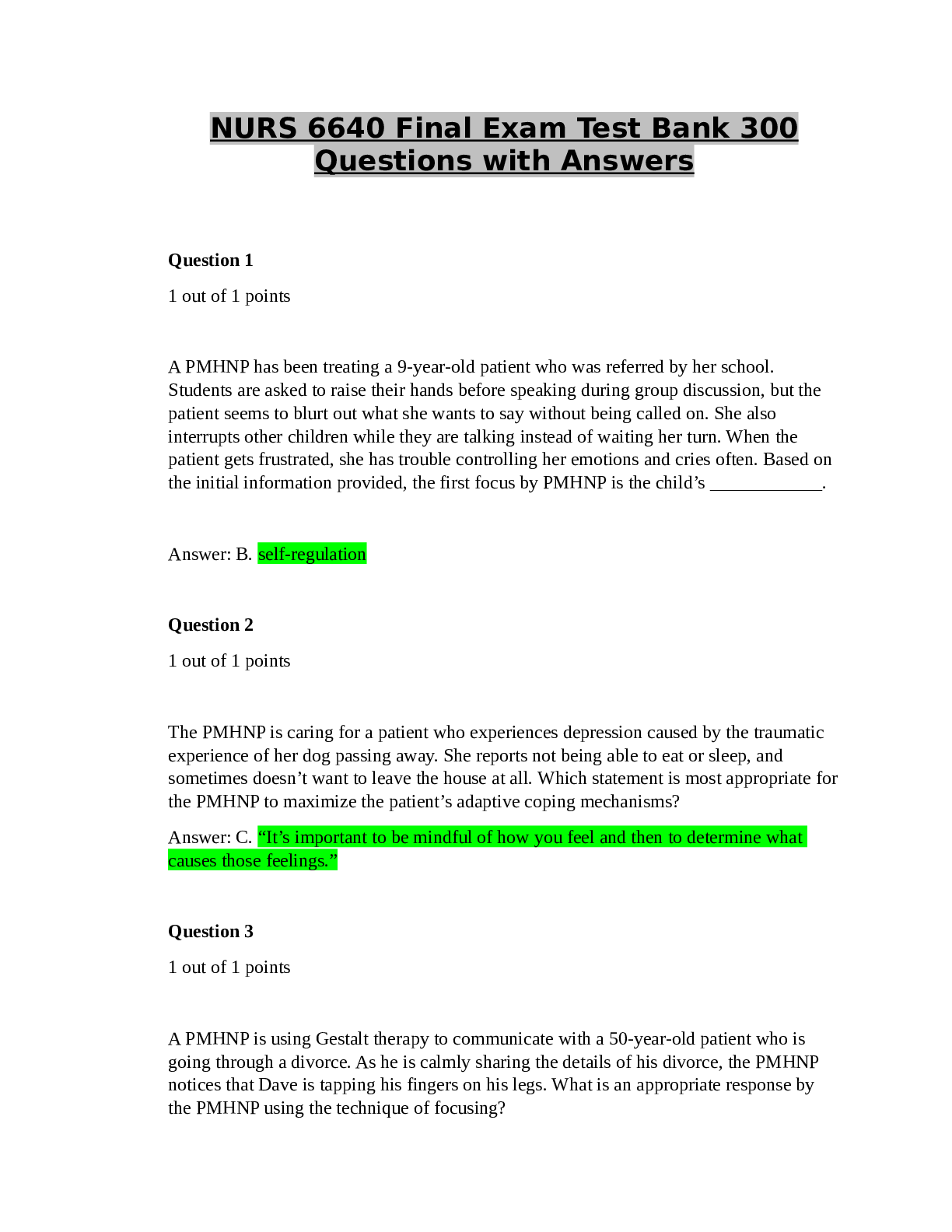
Reviews( 0 )
Document information
Connected school, study & course
About the document
Uploaded On
Aug 08, 2022
Number of pages
91
Written in
Additional information
This document has been written for:
Uploaded
Aug 08, 2022
Downloads
0
Views
124




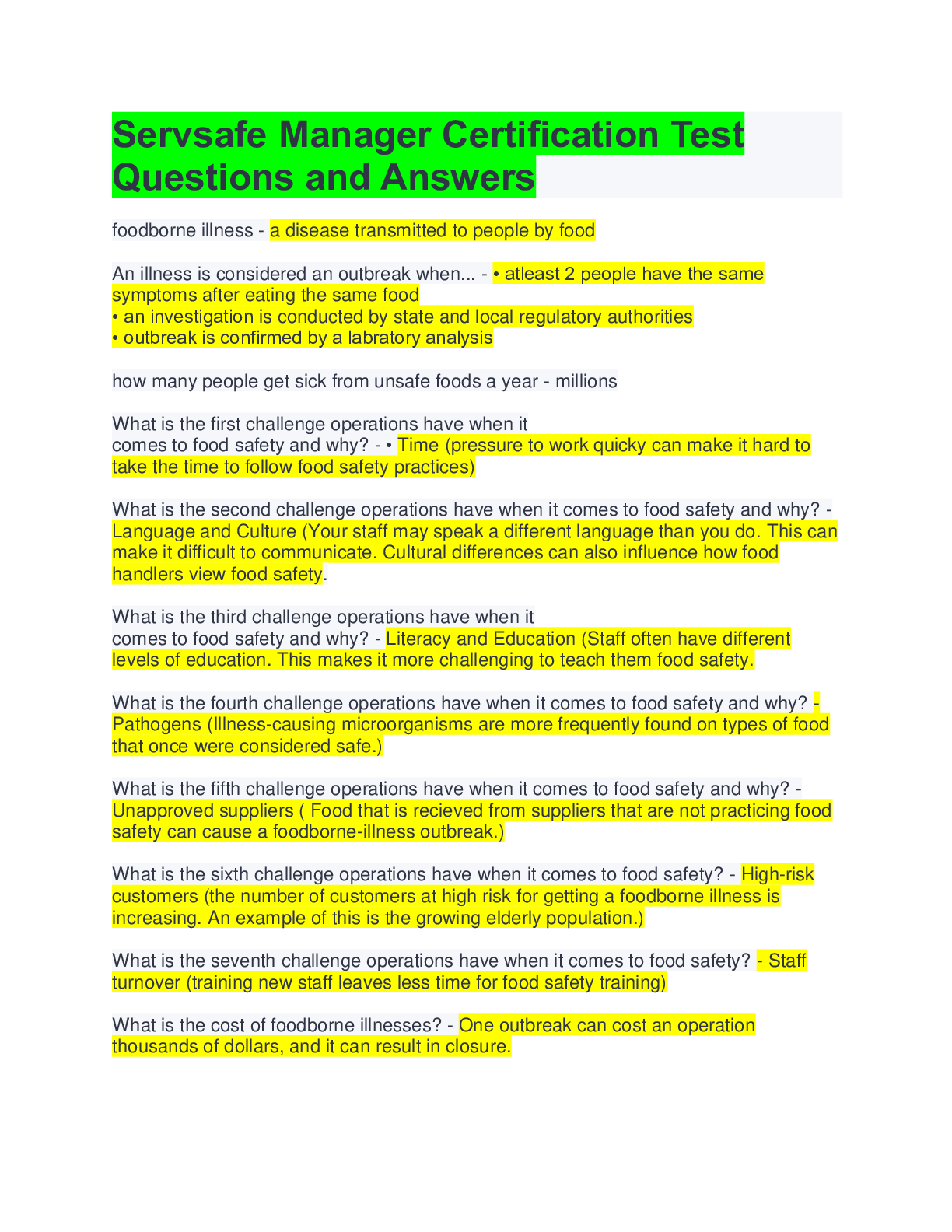
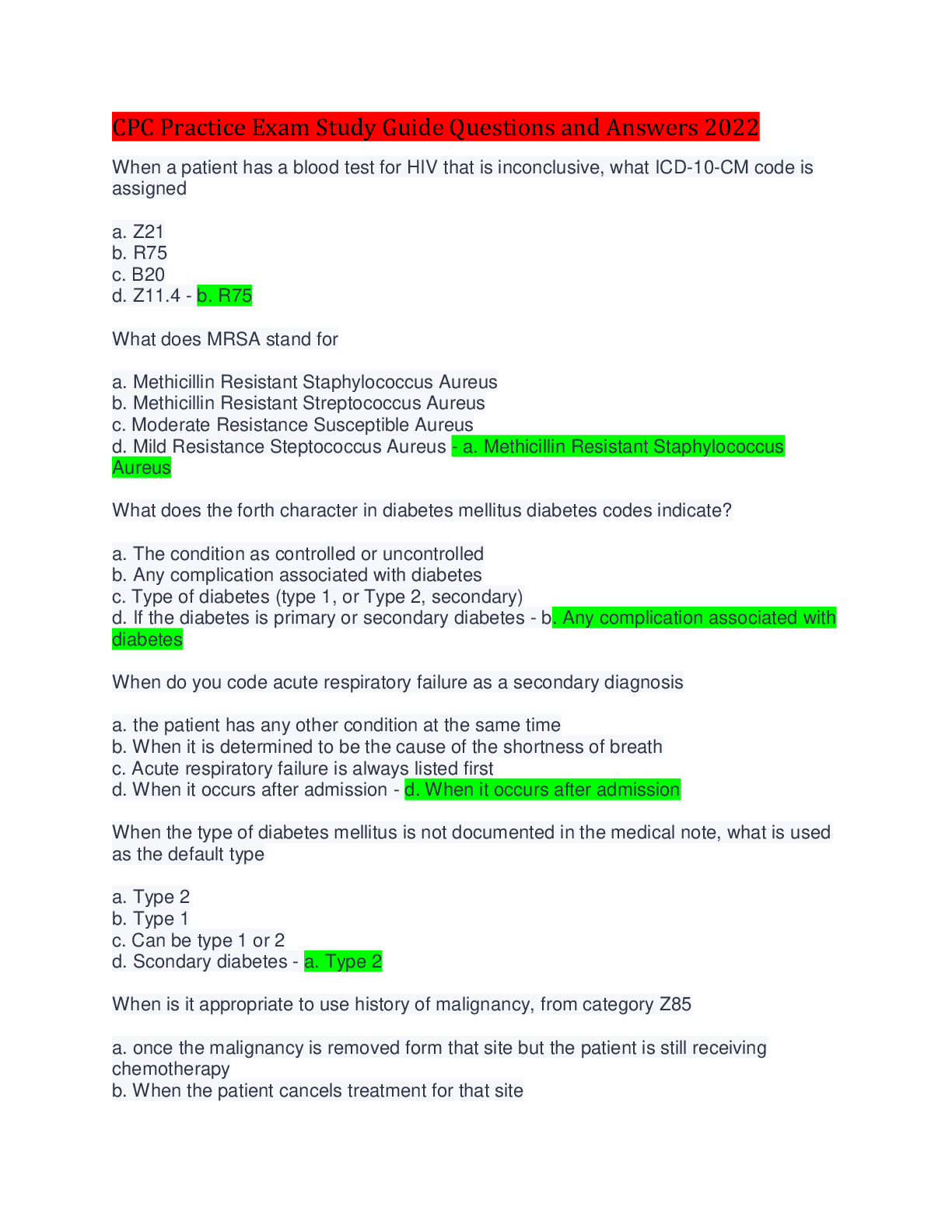
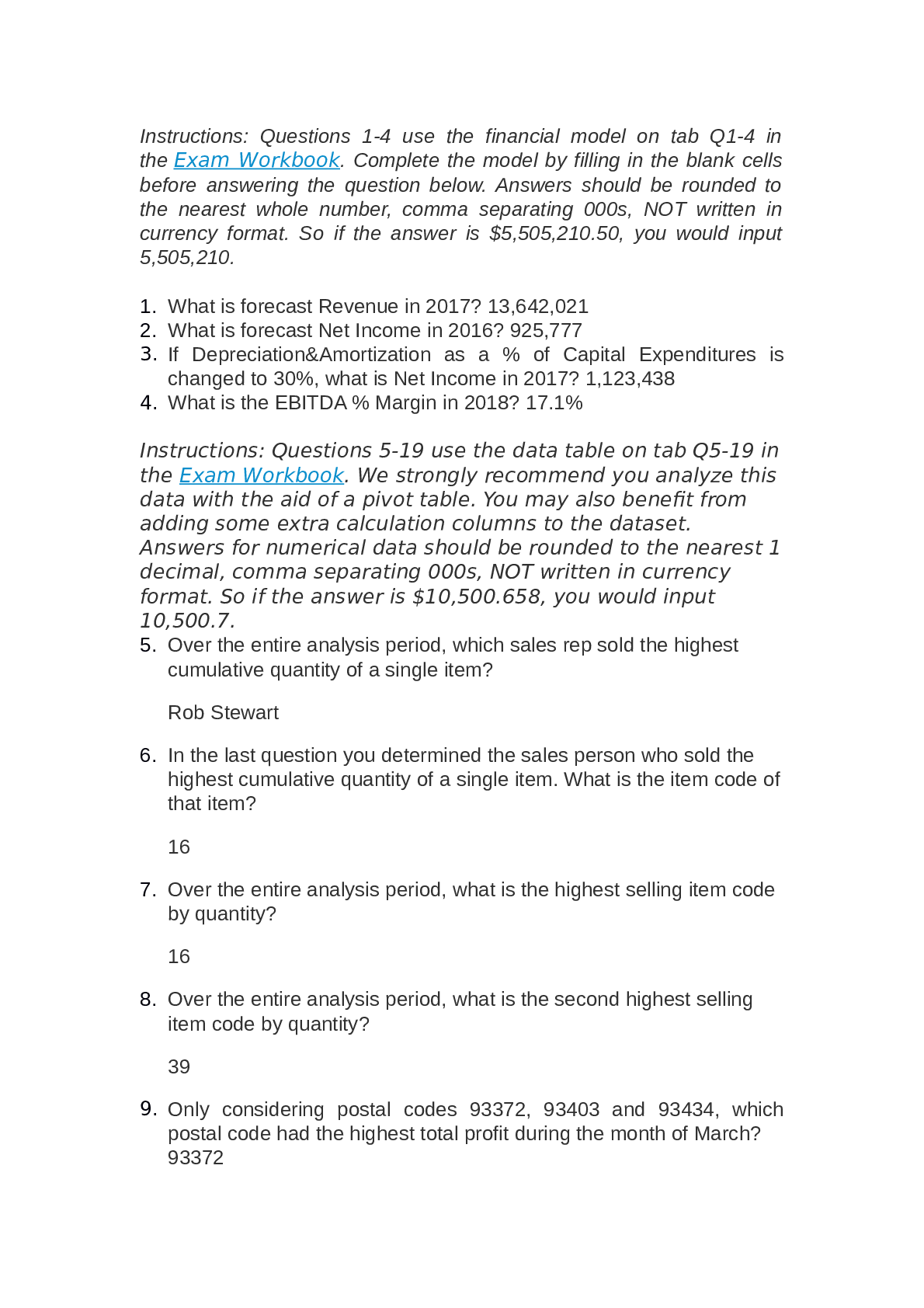
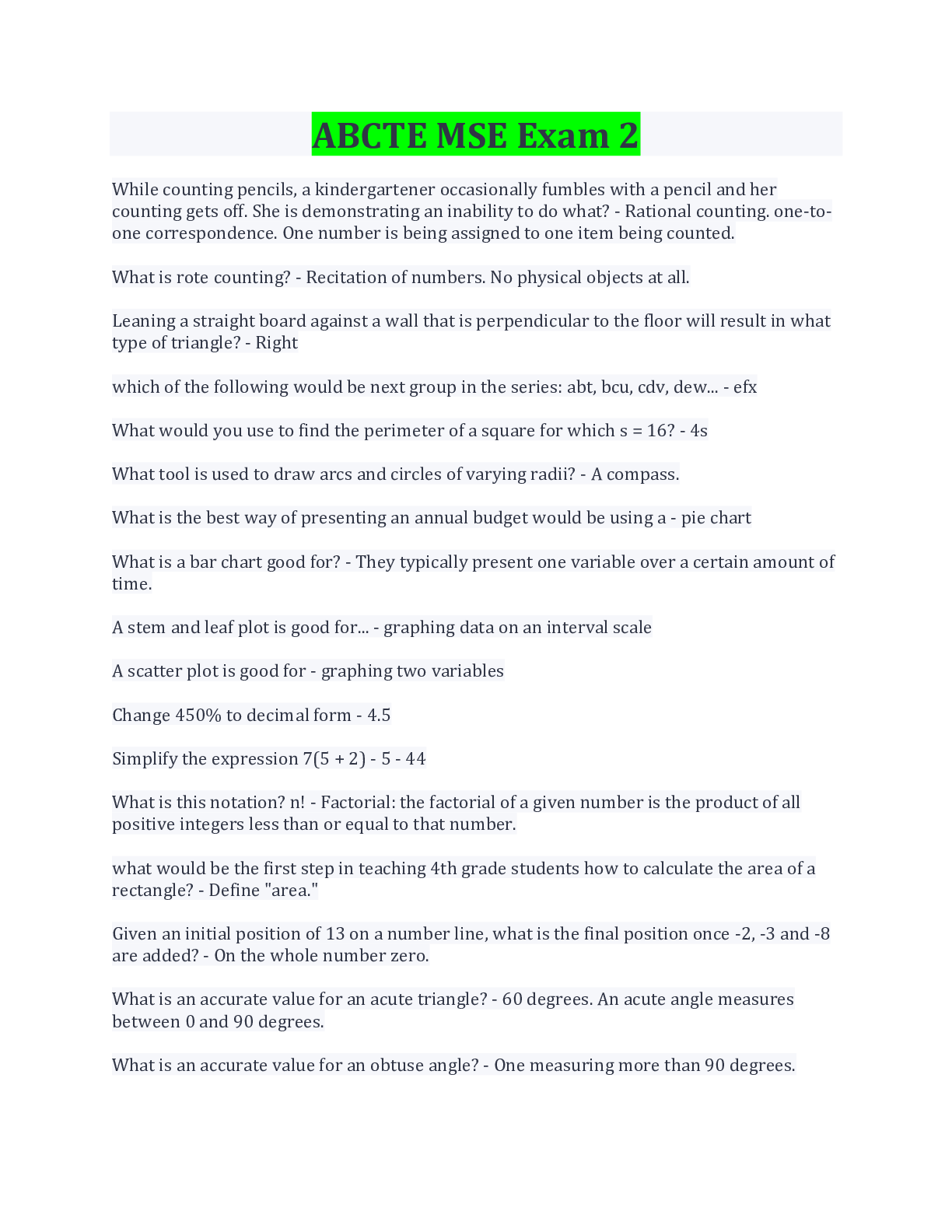



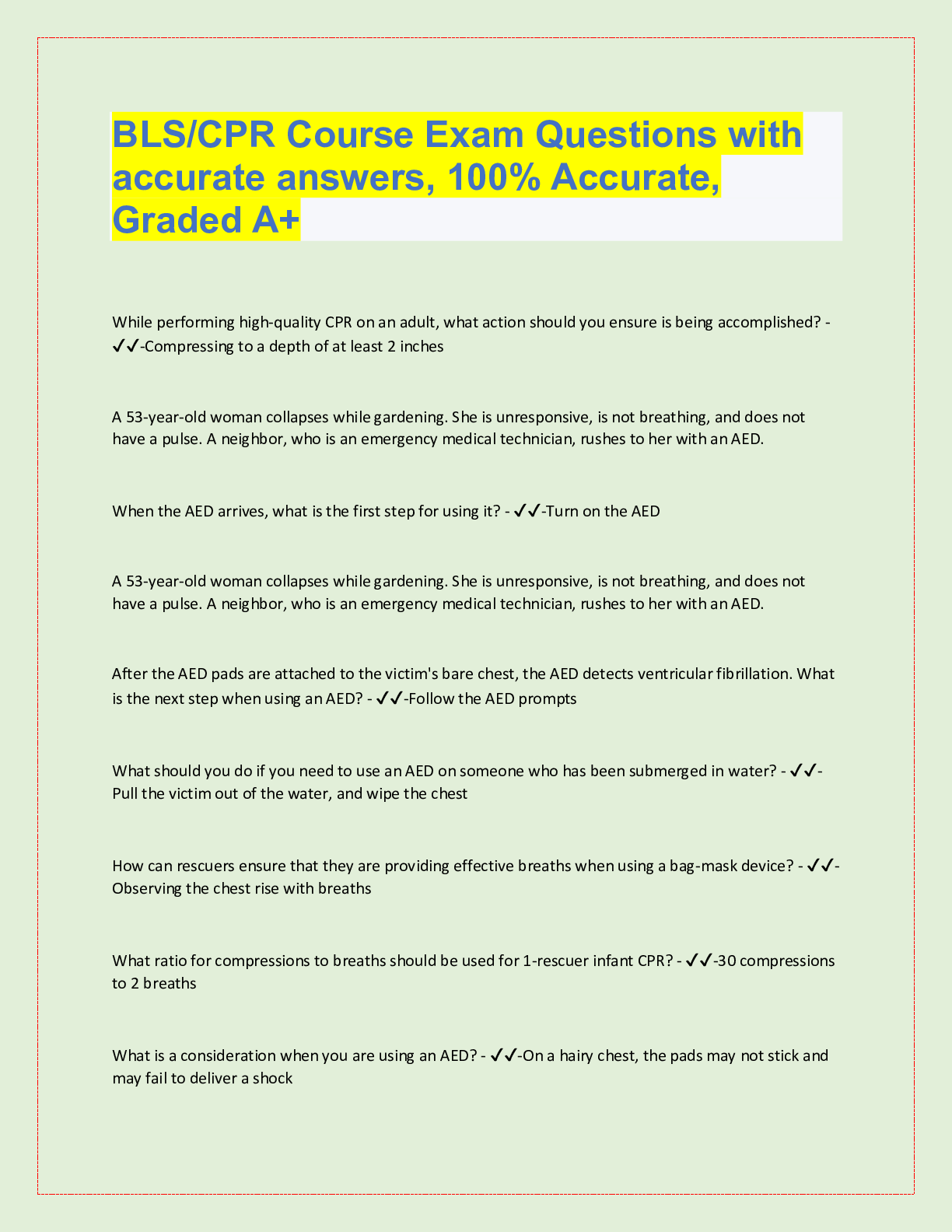

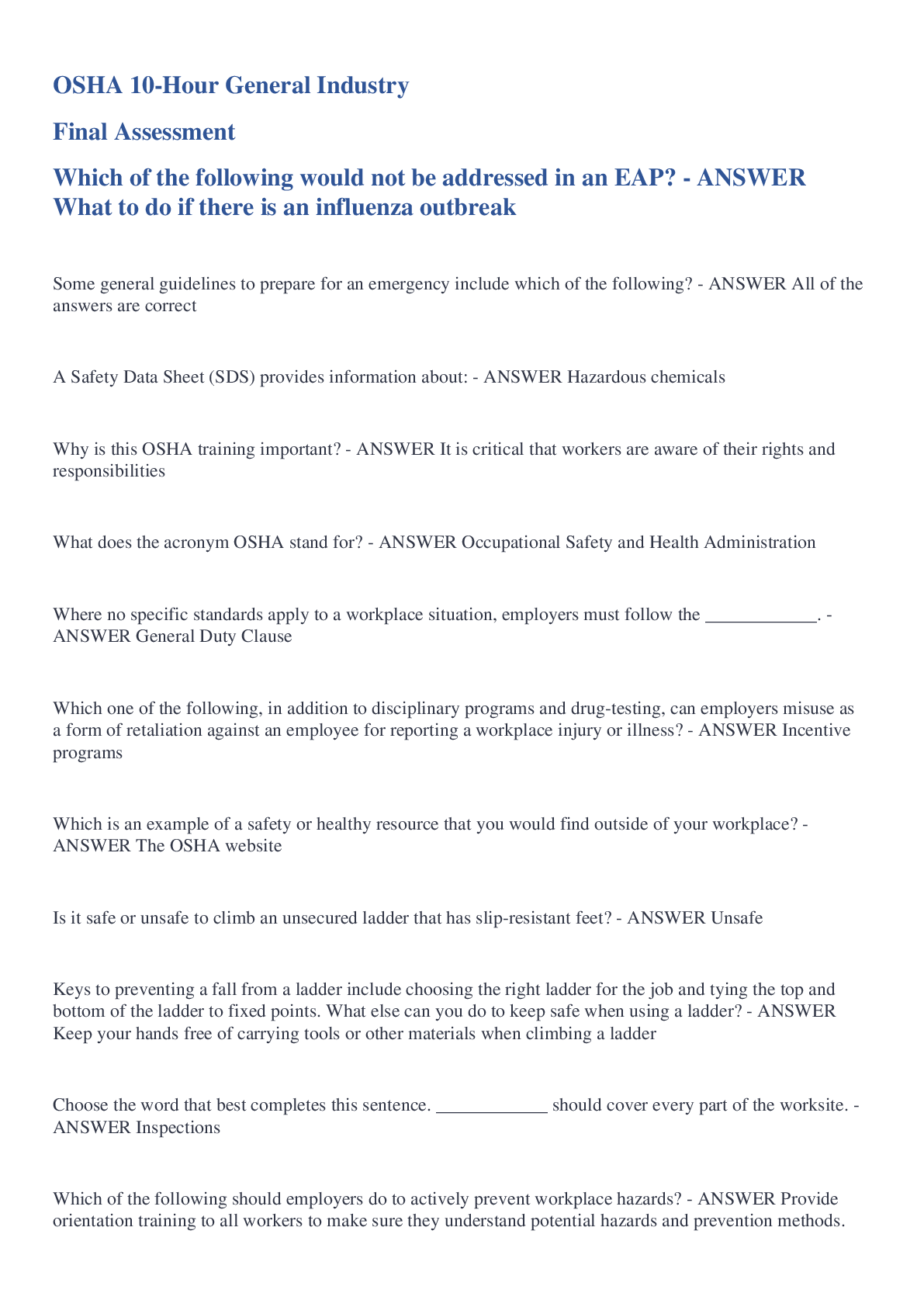

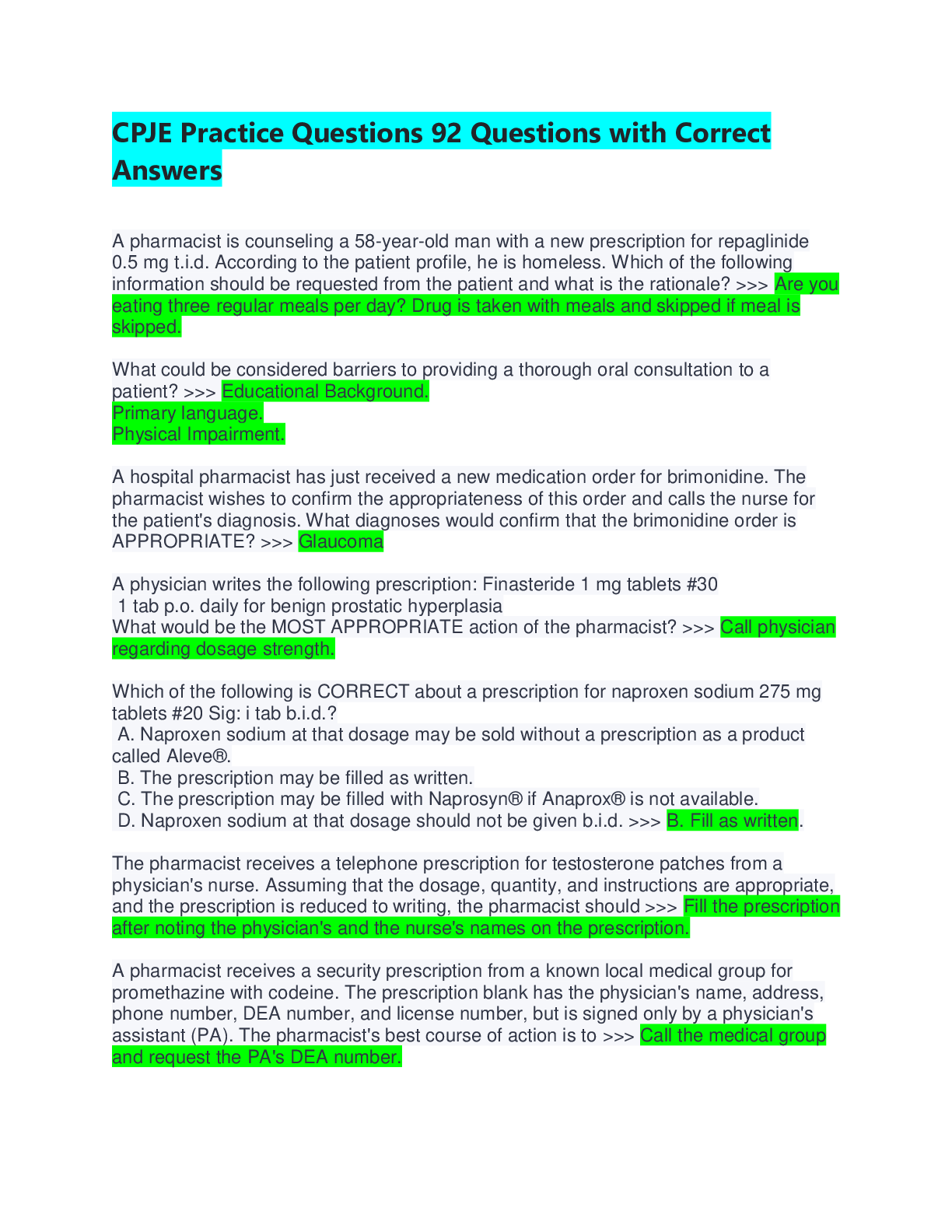


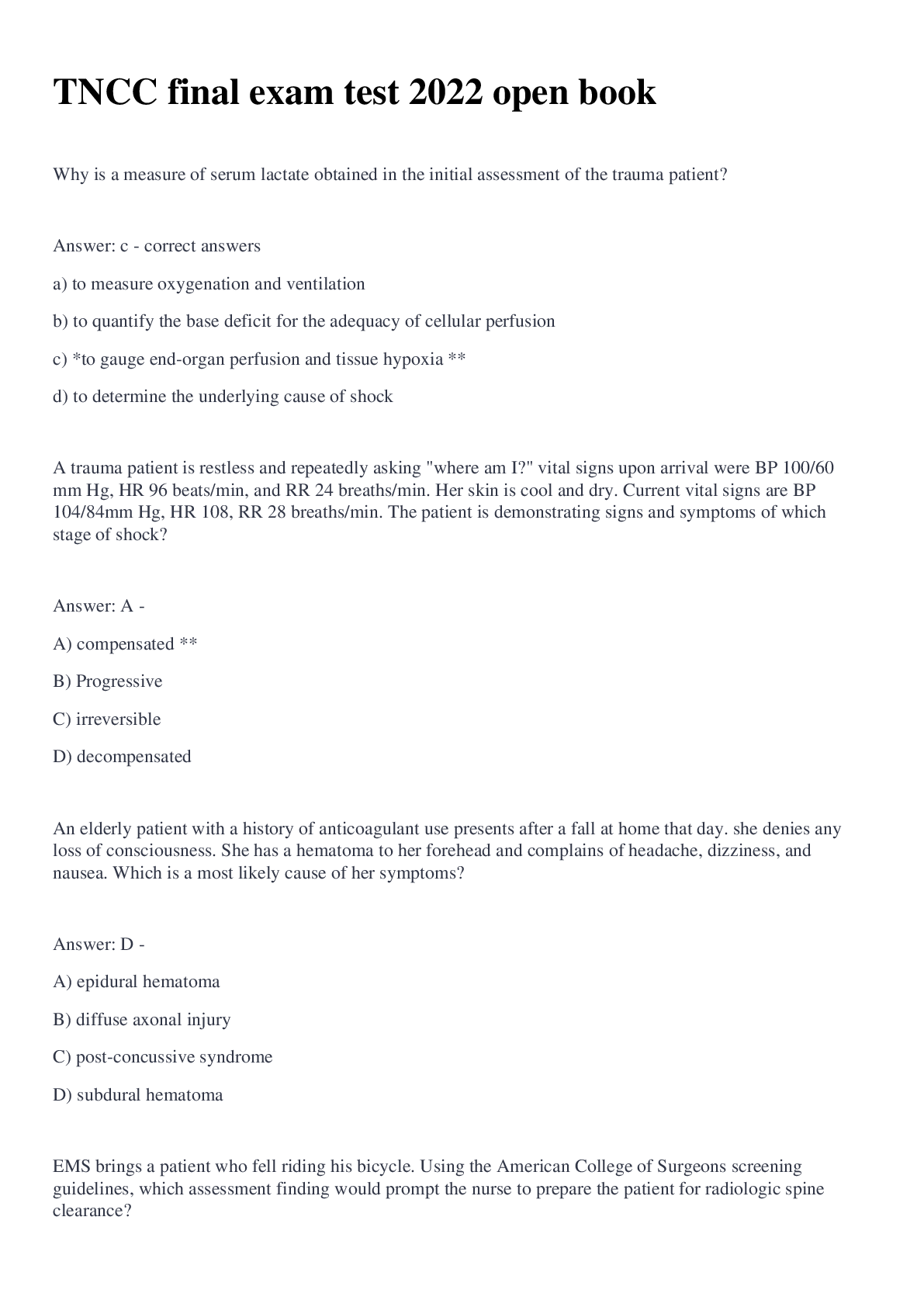

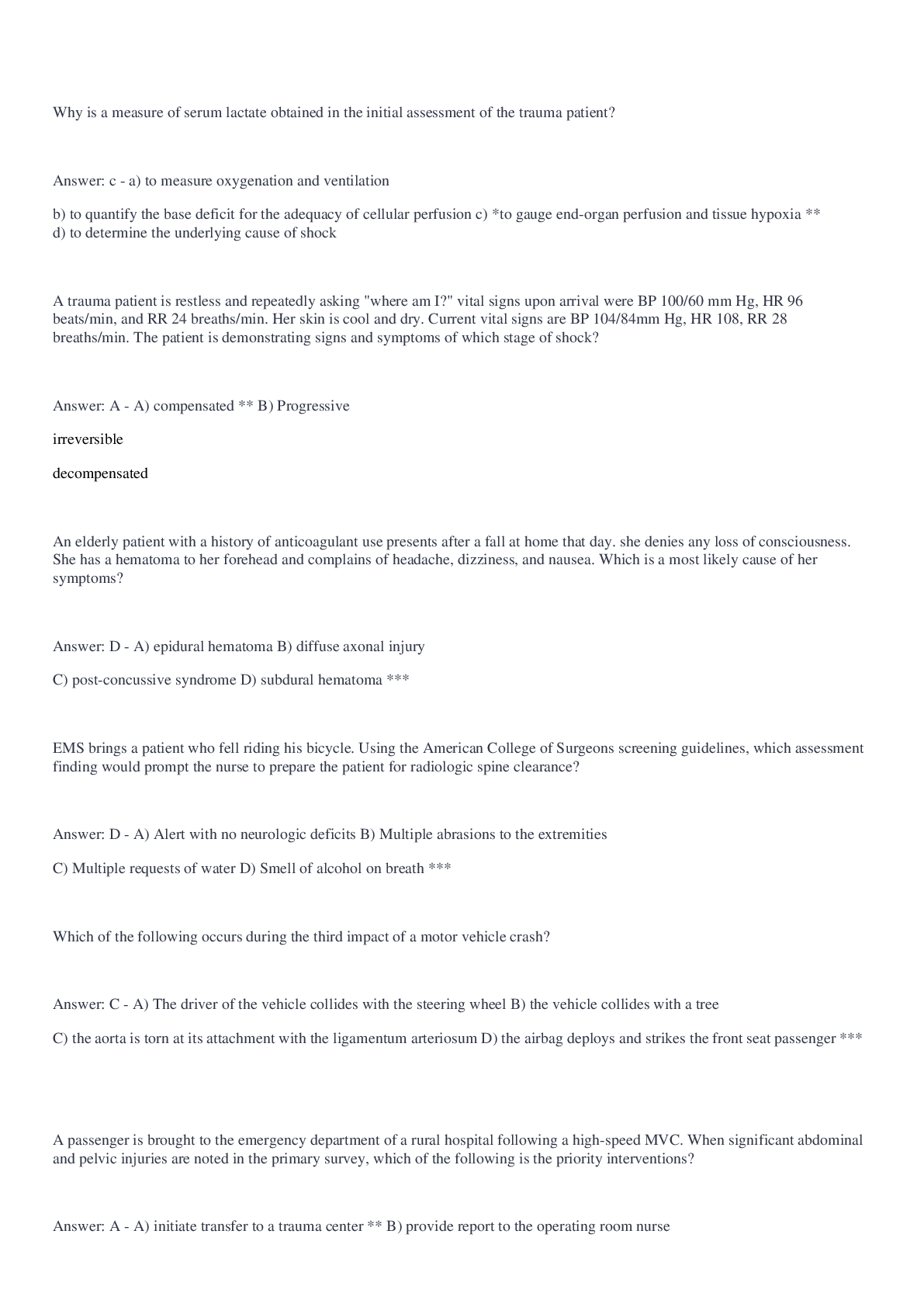
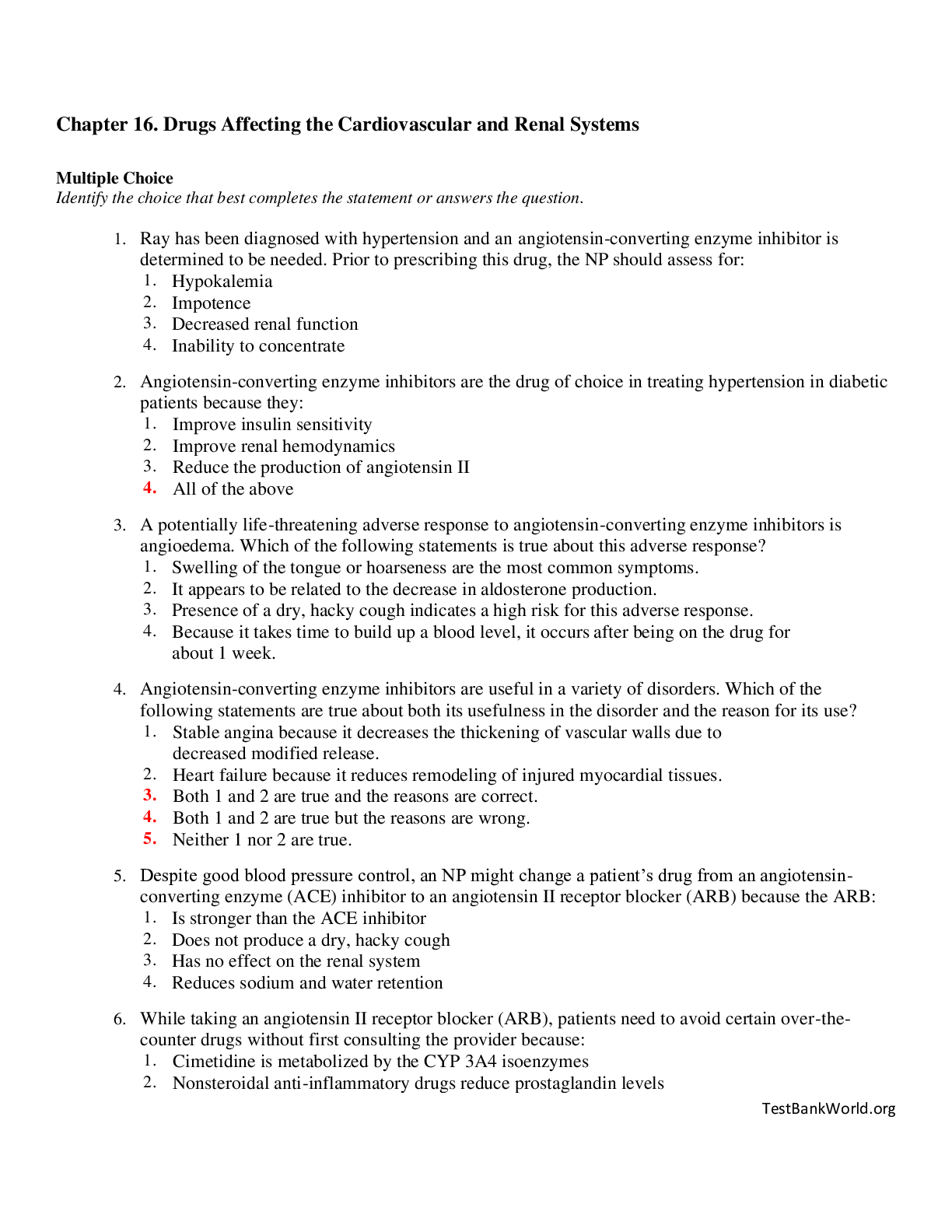

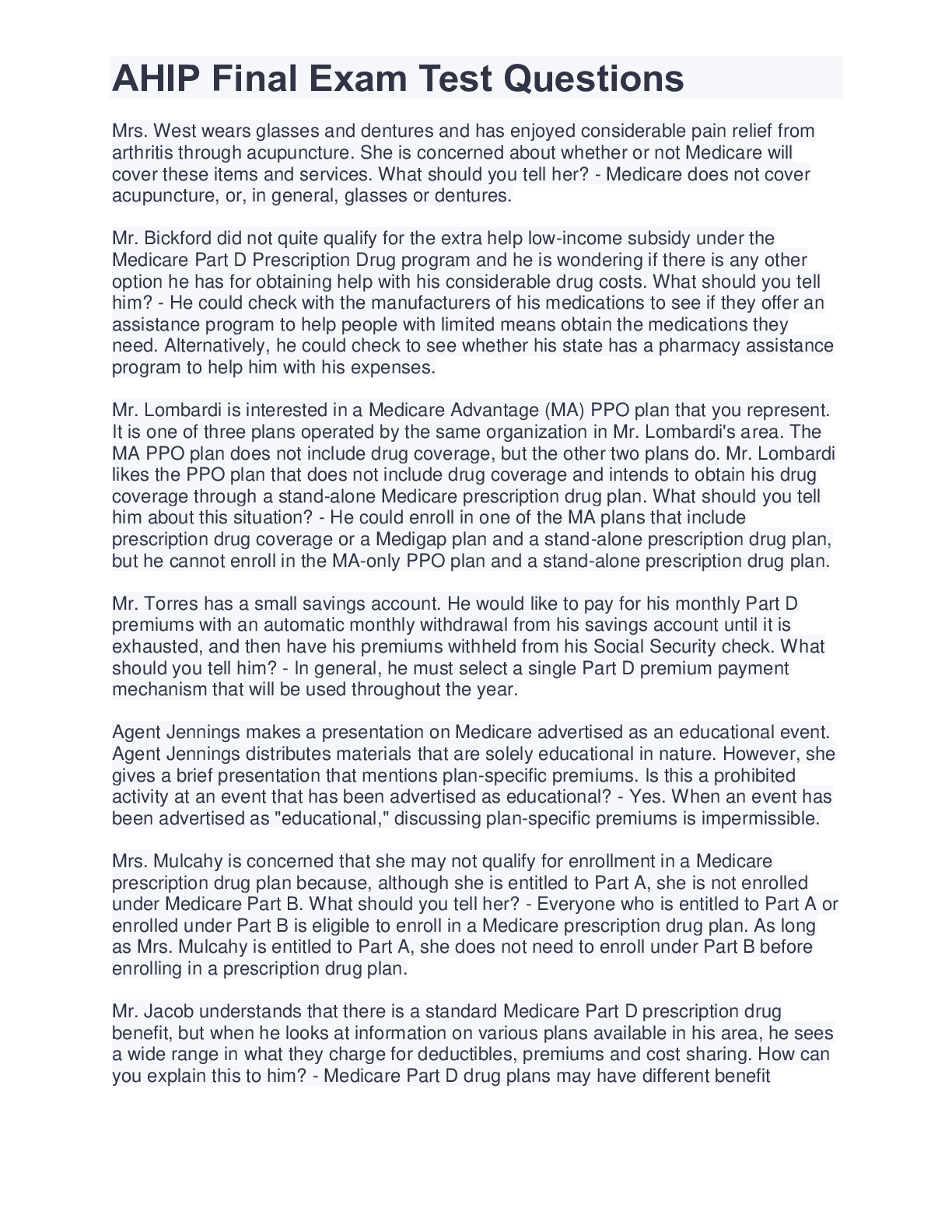
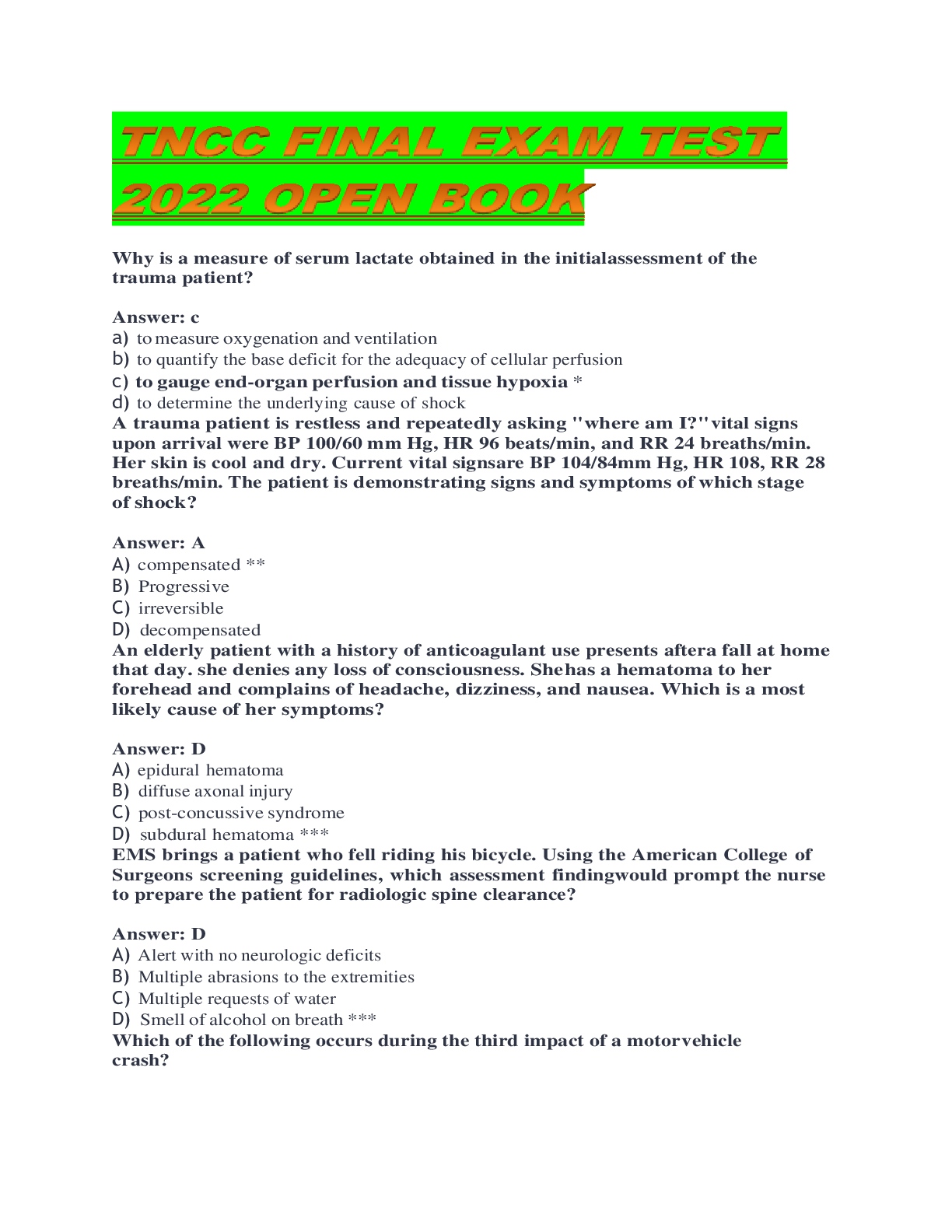
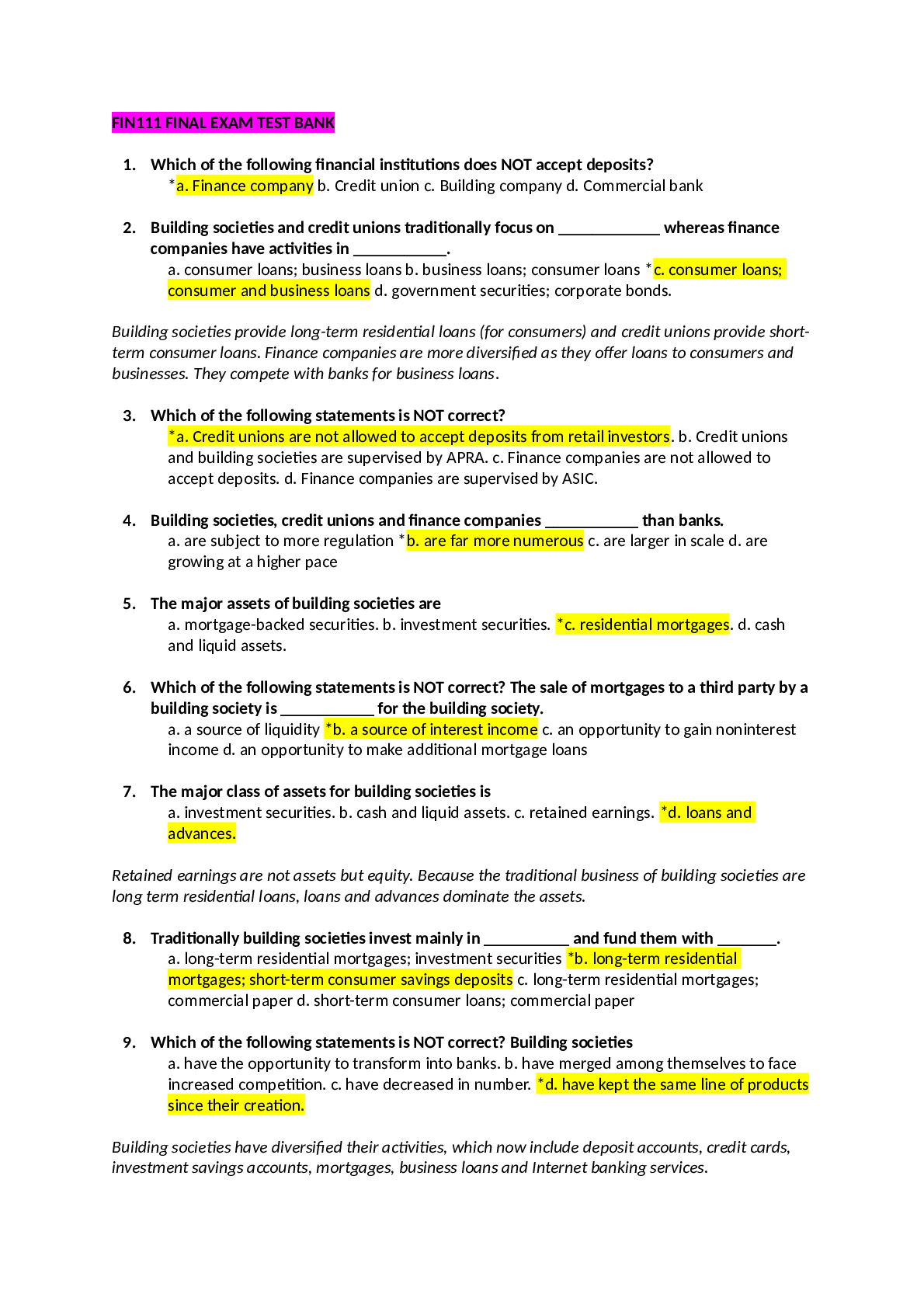
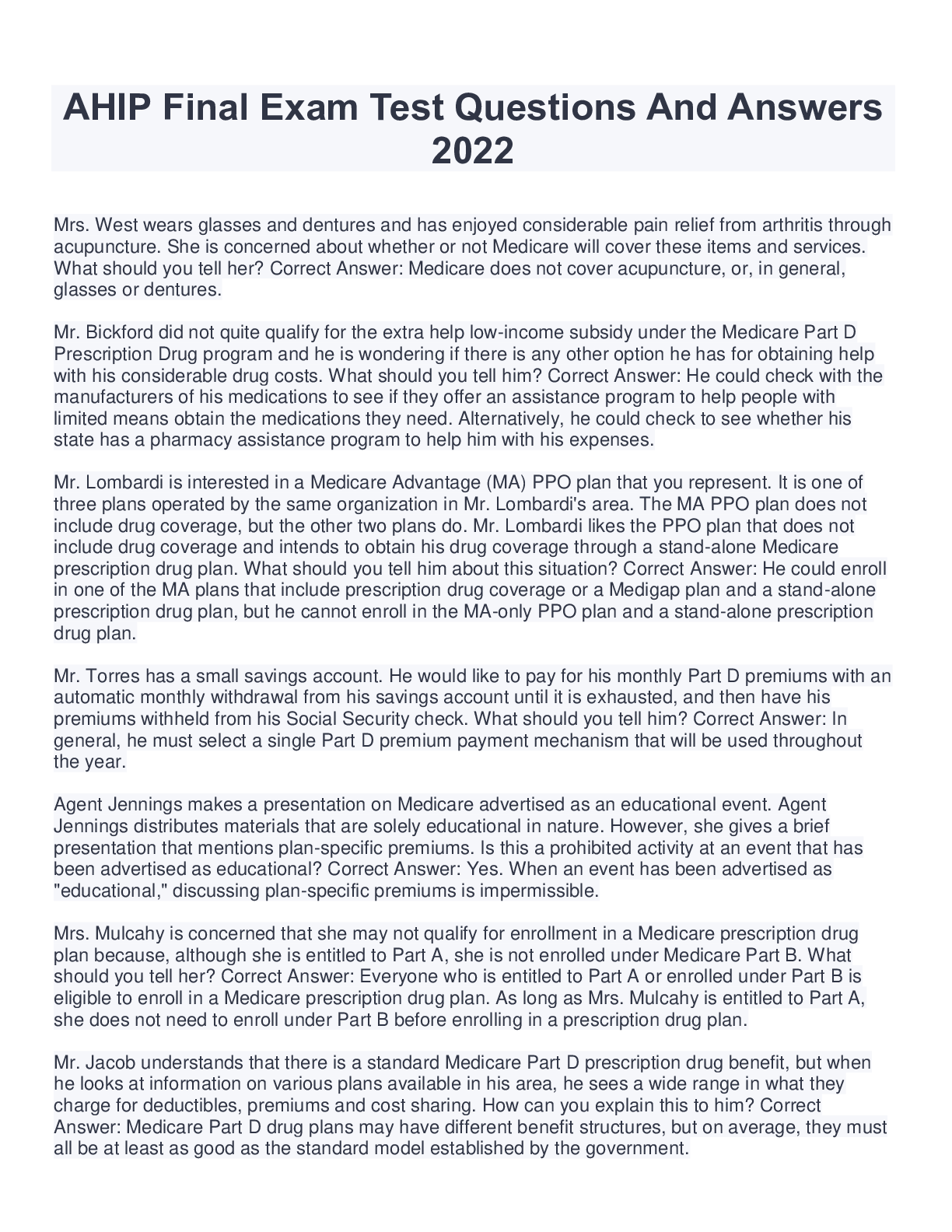

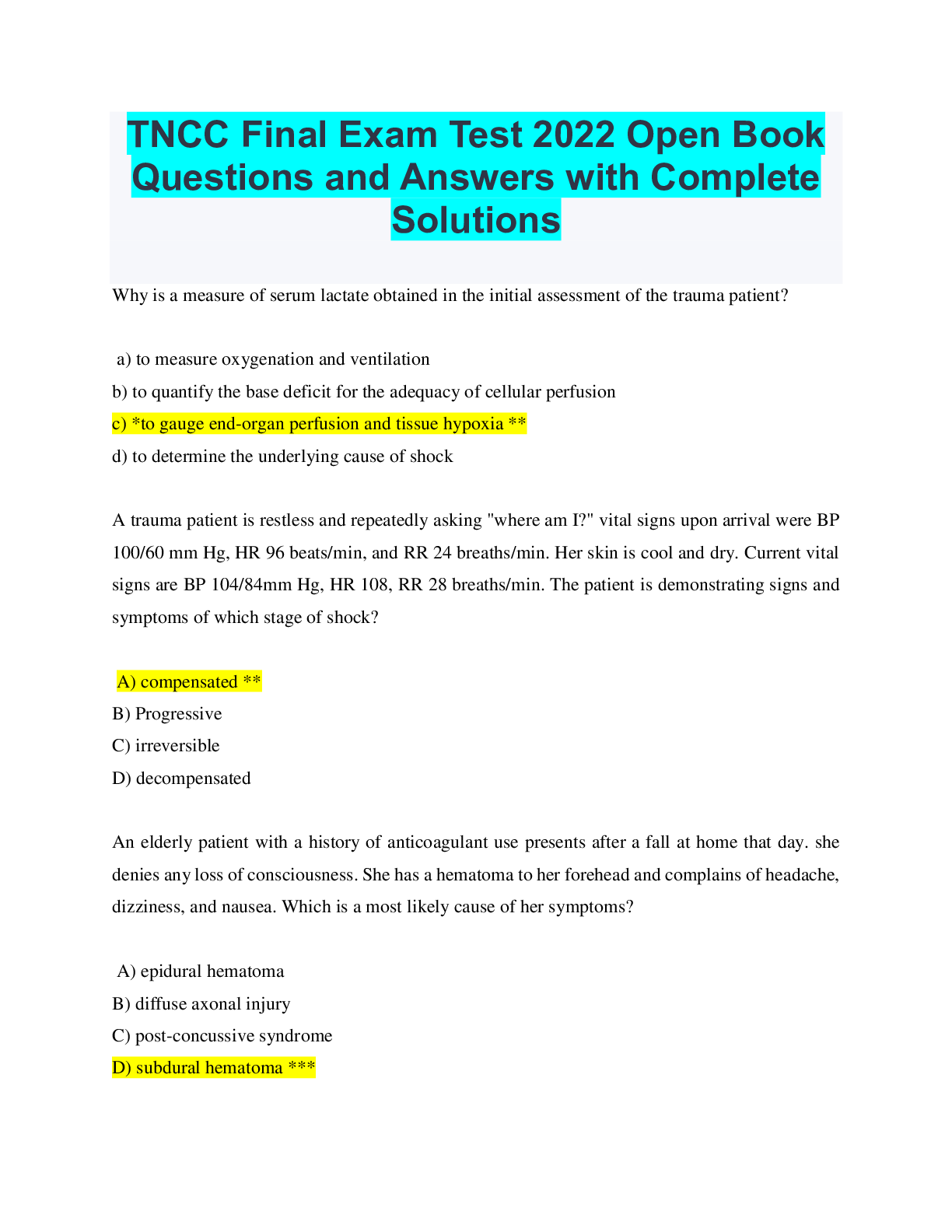

.png)
.png)
